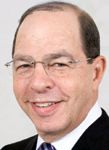Article
SD-OCT provides improvement in imaging compared with TD-OCT
Spectral-domain optical coherence tomography (SD-OCT) represents an improvement in imaging compared with time-domain OCT and, therefore, the potential for improved patient care. Proprietary technology (3D OCT 1000, Topcon Medical Systems) is easy to use and has versatile software, according to one ophthalmologist. The choice of any SD-OCT unit, however, must be based on an analysis of an individual practice's needs.

Key Points

"The hardware of all SD-OCT units is basically the same," said Dr. Fisher, voluntary professor of ophthalmology, Bascom Palmer Eye Institute, University of Miami Miller School of Medicine, Miami. "This unit rates high based on ease of use and software interface."
He added, however, that although SD-OCT represents an improvement over time domain OCT (TD-OCT), the choice of equipment must be based on an individual practitioner's needs.
Fulfilling different needs
The case for this particular device, he said, is that it's easy on the patient, simple and quick to use, has excellent software, and provides high-quality color fundus and three-dimensional (3-D) images.
For the patient, the unit offers simple positioning, needs no chin position change between eyes, and requires only a vertical chin rest re-alignment from patient to patient, Dr. Fisher said.
For the practitioner, this unit offers fast acquisition and data analysis, according to Dr. Fisher. "This device is based on a non-mydriatic fundus camera, with the addition of an SD-OCT. A single mouse click allows for registration of the OCT image to the fundus image, on-screen comparison of images, identification of retinal layers, and report generation," he said.
Reports are easy to generate, but the unit can be operated in a paperless fashion because reports and images can be accessed from any computer in the office, Dr. Fisher added. In addition, the images generated by the unit offer a 3-D perspective and can serve as excellent tools for patient education, he said.
Limitations that Dr. Fisher has identified in his practice include restricted choroidal imaging, an imaging area limited to 6 mm ? 6 mm per individual scan, and artifacts caused by significant eye movements.
Making a choice
Ultimately, the choice comes down to a practitioner making a decision about what his or her needs are, and then filling as many of those needs as possible with the units that are available, he said.
"If you're in the field of retina, for example, you will probably buy a different machine than if you're in the field of glaucoma," Dr. Fisher said. "And if you're in the field of research, you're going to buy a different machine than if you're in a practice where you want to see a large number of patients and you need fast imaging with analysis at multiple workstations."
Basing a choice of an SD-OCT machine on the needs of the practice "is the same case as it has been for every machine that has come along for past decades, including those used for ultrasound, vitrectomy, laser surgery, endoscopy, and now imaging," Dr. Fisher said. "For each of these significant advances, there have always been people who have adopted the technology early and said, 'My machine is better than your machine.' In reality, however, it comes down to individual needs. It's like buying a car. You don't buy a sports car if you need a mini-van. Once you analyze your needs, you can arrive at a good decision about what kind of imaging machine to buy for your practice."
Although eminently pragmatic about technology, Dr. Fisher acknowledged that the advance from TD-OCT to SD-OCT does offer the potential for improved patient care, thanks to improved imaging.
Newsletter
Don’t miss out—get Ophthalmology Times updates on the latest clinical advancements and expert interviews, straight to your inbox.




